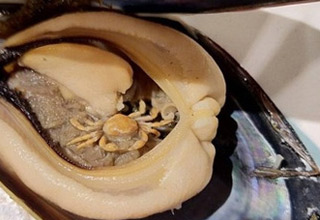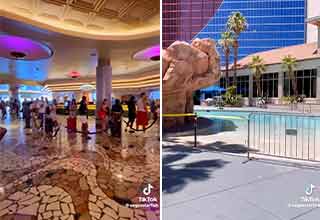Important stance of 2004 Aston Martain DB9
2004 Aston Martian DB9
The importance of good stance
"The way the car sits on the road is crucial," says Fisker. "A sleek, long look is what we wanted."
The wide track and long wheelbase are further advantages. Compared with the outgoing Aston Martin DB7 Vantage, the Aston Martin DB9's wheelbase is 149mm longer, yet the track is 52mm wider at the front. Yet overall length and width are only marginally increased.
"The 19-inch wheel has taken into account the optimal size for this car's design and dynamics," says Fisker, "although different wheel styles will be available."
This low bodywork, relative to the wheels, is possible because of the suspension design. The front suspension uses wishbones that 'fit' within the diameter of the wheels. This narrow spacing, between top and bottom wishbones, means the bodywork can be low - because there is no high suspension to clear. It also improves camber stiffness, improving handling.
"The Aston Martin DB9 had to have the best quality and most luxurious cabin in the 2+2 sports car class," says Fisker. As with the exterior, the design is simple and elegant and a premium quality look and feel are crucial.
"The latest technology is also essential, and that's exactly what the Aston Martin DB9 customer gets," says Fisker. "But in an Aston Martin, the technology is aimed at increasing the driving pleasure. There are no computer gimmicks. You don't buy an Aston Martin to play games on the in-car computer, or to send emails." Aluminium is used for door handles, on the dashboard, in the instrument cluster, and for some trim panels. The most distinctive use of aluminium is probably in the instruments. The dials are made from aluminium, and are of noticeable 'three dimensional' design. They are flood lit, not back lit - making them especially attractive and clear at night.
There are 20 new leather colours, supplied by Bridge of Weir in Scotland. The hides are particularly soft and supple. The leather skins the seats and is used widely throughout the rest of the cabin.
"We spent a lot of time considering how best to use wood," says Interior Designer Sarah Maynard. "Today wood is typically used as an appliqué, strips of highly polished veneer simply adding decoration to the car. We wanted the wood in the Aston Martin DB9 to look more structural, as it does on avant-garde modern furniture. We also wanted to use large pieces of wood, rather than little strips - again, as in top furniture."
Maynard adds: 'Wood is used in two places only: on top of the centre of the dashboard and, if the customer chooses, for the door caps. Three types of wood are offered: walnut, mahogany and bamboo. The wood is one piece, so it looks completely different from burr strips, and can be oiled rather than high gloss. Glossy wood invariably looks like plastic."
Maynard, a former fashion designer, attended numerous international fashion, furniture, leather and fabric fairs, as she, Fisker and the design team, conceived the cabin.
Her favourite cabin design feature is the clear glass starter button. "It seemed wrong to us that most car starter buttons - the first point of contact between driver and engine - is a plastic button. We wanted something better so decided on crystal-like glass. The Aston Martin logo is sand etched into it. It's lit red when the ignition is on, and afterwards changes to light blue. I think it's a really cool piece of design."
A great deal of effort has been put into ensuring that the Aston Martin DB9 is stable at high speed and has excellent front-to-rear lift balance. Aerodynamic performance was tuned using Computational Fluid Dynamics (CFD), at Volvo's studios in Sweden. This is one of the most advanced and effective ways of ensuring good drag figures and excellent stability.
Aston Martin also used England's Cranfield University's state-of-the-art 40 percent model wind tunnel, which is widely used for motor sport.
Just as much effort was put into the underside, as the top side. A full undertray reduces lift and drag, and wheel arches are carefully profiled to allow for good airflow. Even the exhaust silencer has been shaped to be as aerodynamic as possible.
The designers of the Aston Martin DB9 balanced beauty with aerodynamic performance. Sharp corners and chiselled profiles can reduce Cd figures, but can also lead to bland and unsightly styling. Pushing wheels out to each corner, in the Aston Martin tradition, improves stability and handling but also means 'Coke bottle' curves down the car's sides, which can have an effect on the Cd figure. The Aston Martin DB9's drag coefficient is 0.35, similar to that of the Aston Martin Vanquish.
"A low Cd figure was not an absolute priority," says Fisker. "The goal was superb styling with high speed stability and great front-to-rear balance."






2 Comments